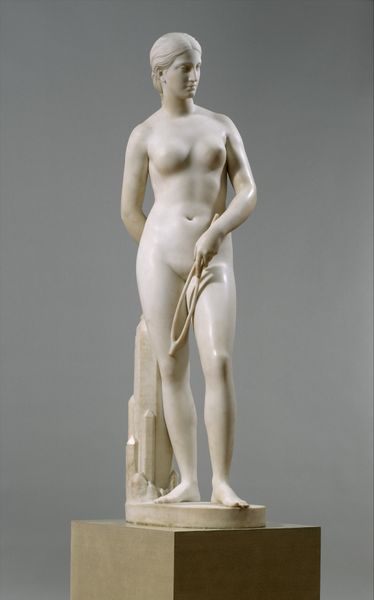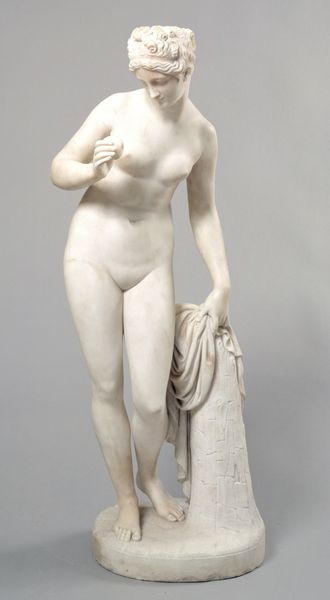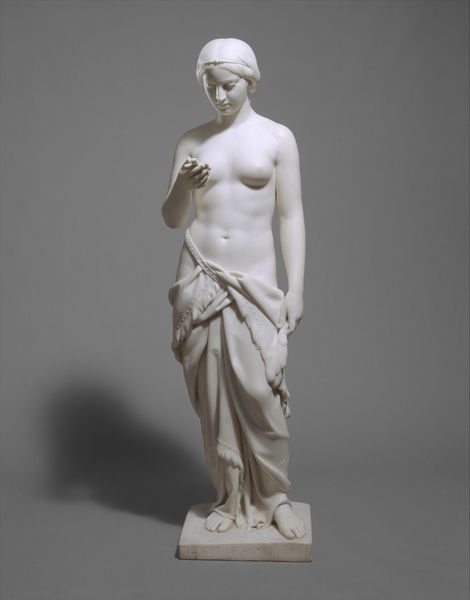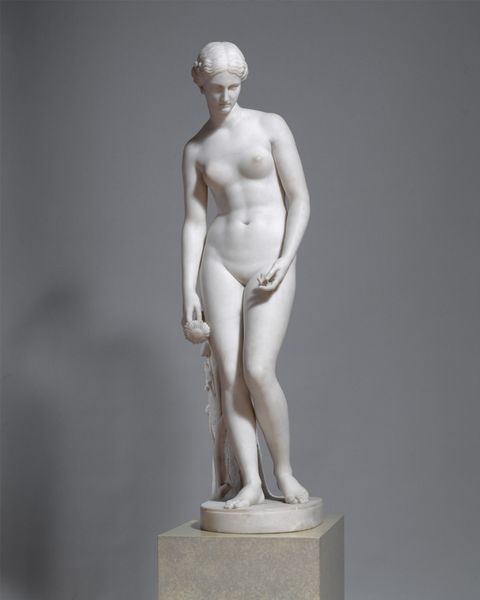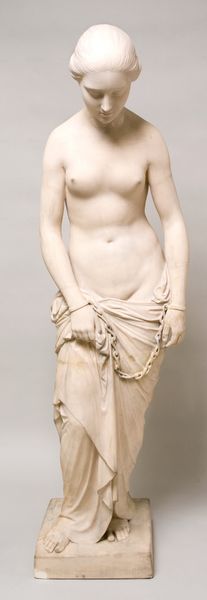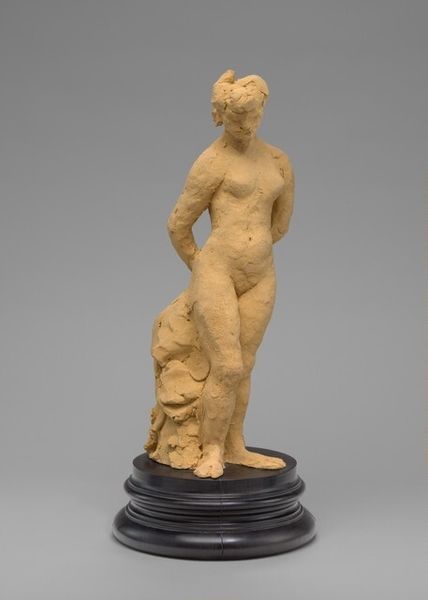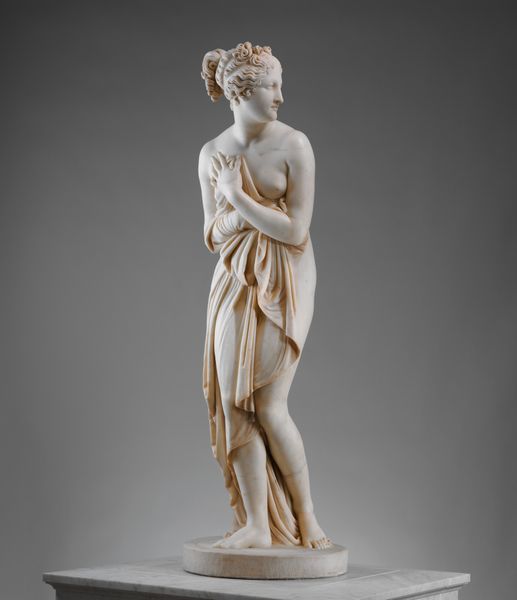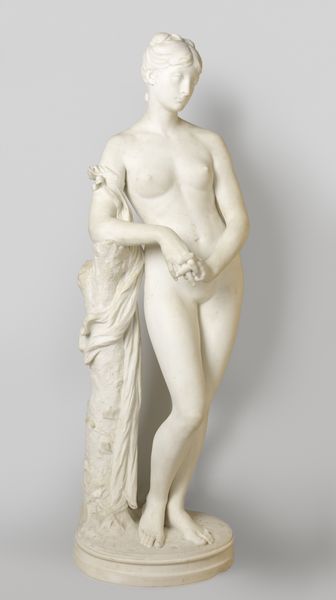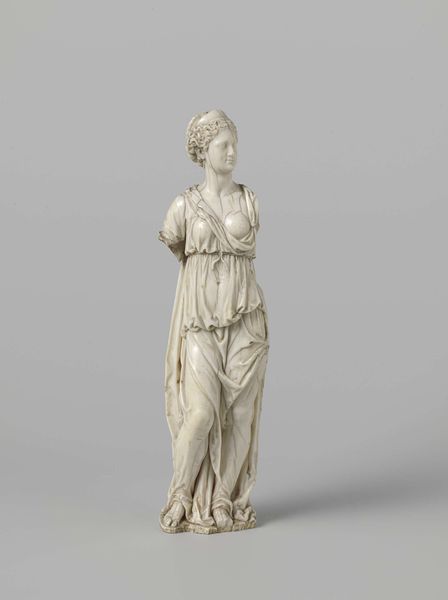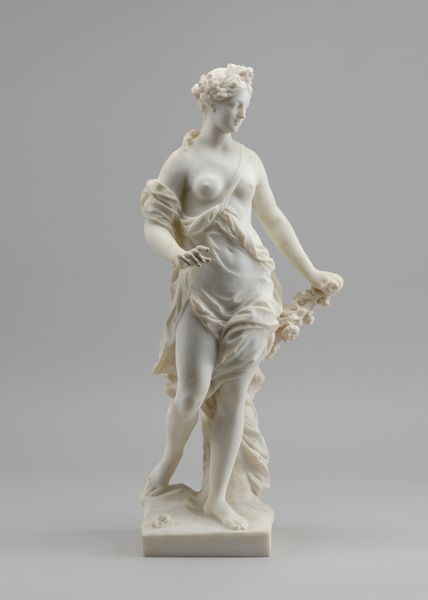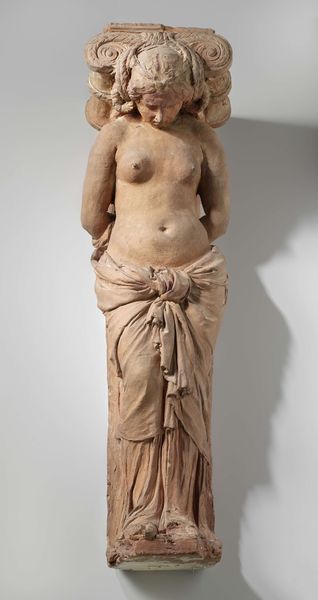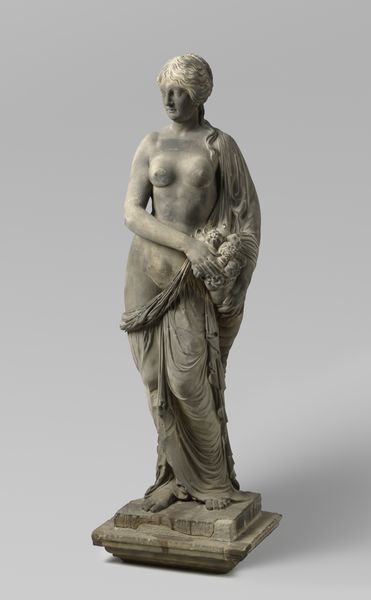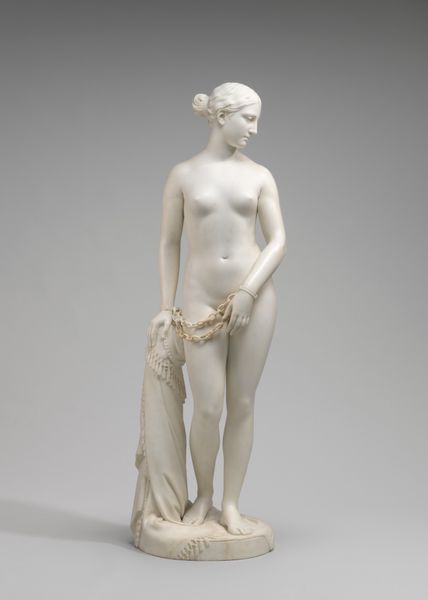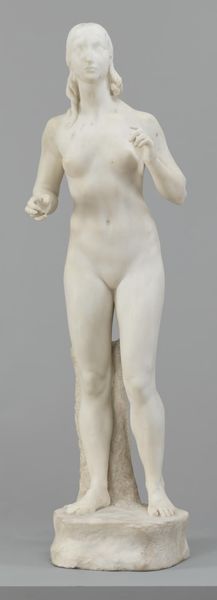
Dimensions: 65 x 20 1/4 x 17 in. (165.1 x 51.4 x 43.2 cm)
Copyright: Public Domain
Editor: We're looking at "The White Captive," a marble sculpture created by Erastus Dow Palmer between 1857 and 1859. She stands there, so serene, almost ethereal, yet the title and the shackle on her wrist imply something darker. What strikes you about this piece? Curator: This sculpture is incredibly potent. Beyond the aesthetic beauty, it’s crucial to consider the socio-political context in which Palmer created it. The "white captive" was a recurring theme in 19th-century American art and literature. On the surface, it appears to depict the idealized innocence of a white woman held captive by Native Americans. But what is being implicitly said about anxieties around race, gender, and the expansionist narrative of the time? Editor: So, it’s not just about a literal captivity? Curator: Exactly. Think about whose stories are being told, and whose are being silenced. This idealized, nude figure represents a specific type of vulnerable womanhood, while the narrative conveniently omits the violence and dispossession inflicted upon Native American populations. Editor: I see. So, it's perpetuating a harmful narrative. It's easy to be swept away by the beauty, but we need to critically examine the story it's telling – and obscuring. Curator: Precisely. Examining Palmer’s artistic choices, like the idealized form and the averted gaze, can also reveal a complex negotiation of power and gender. We need to engage with these histories critically to challenge their continued impact. Editor: Thank you; that gives me a lot to think about. It’s definitely not just a pretty sculpture! Curator: Indeed. By unpacking these layers, we can start a crucial dialogue about the historical narratives that shape our understanding of identity and power dynamics even today.
Comments
No comments
Be the first to comment and join the conversation on the ultimate creative platform.
